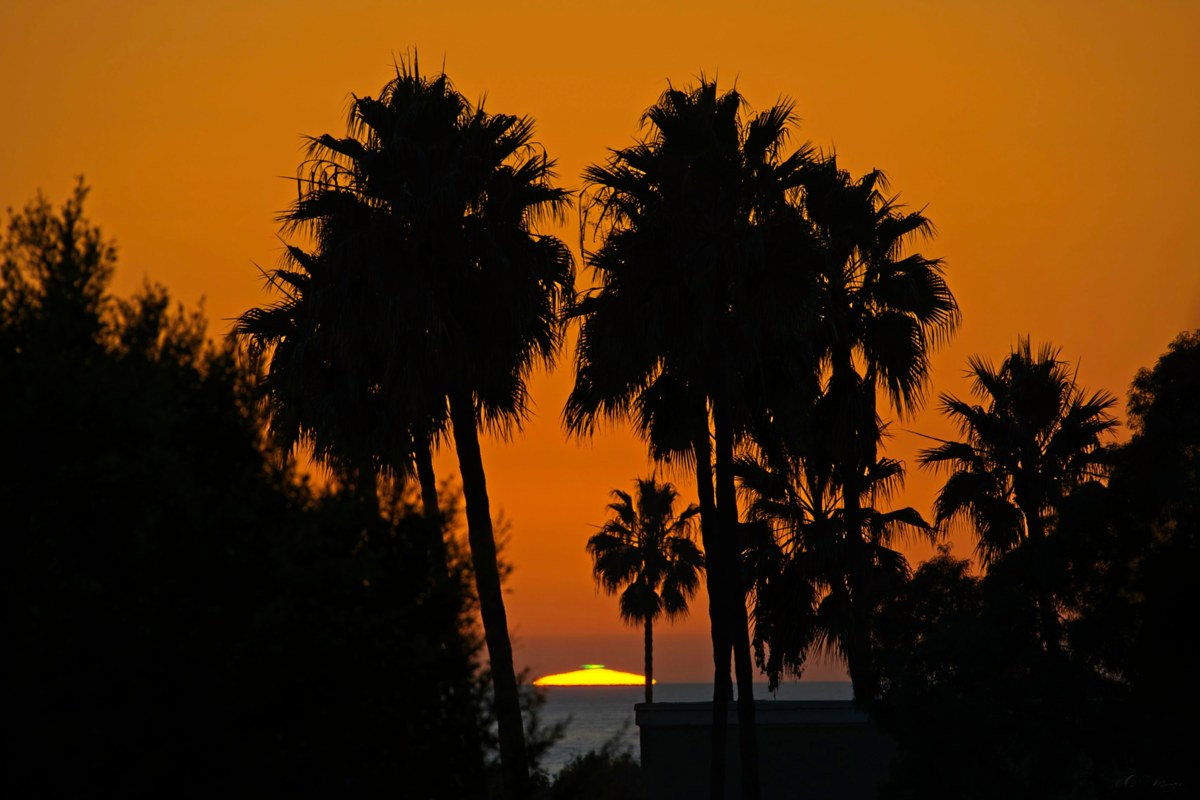
Once a year, for two days, I get the sun between the palms. That was this week. The first shot was Wednesday, and pretty standard. Thursday I got a few frames with green flash, so I’ll share one of them.
Behold!
1200px for phone





2000px for desktop:






Once a year, for two days, I get the sun between the palms. That was this week. The first shot was Wednesday, and pretty standard. Thursday I got a few frames with green flash, so I’ll share one of them.
Behold!
1200px for phone





2000px for desktop:





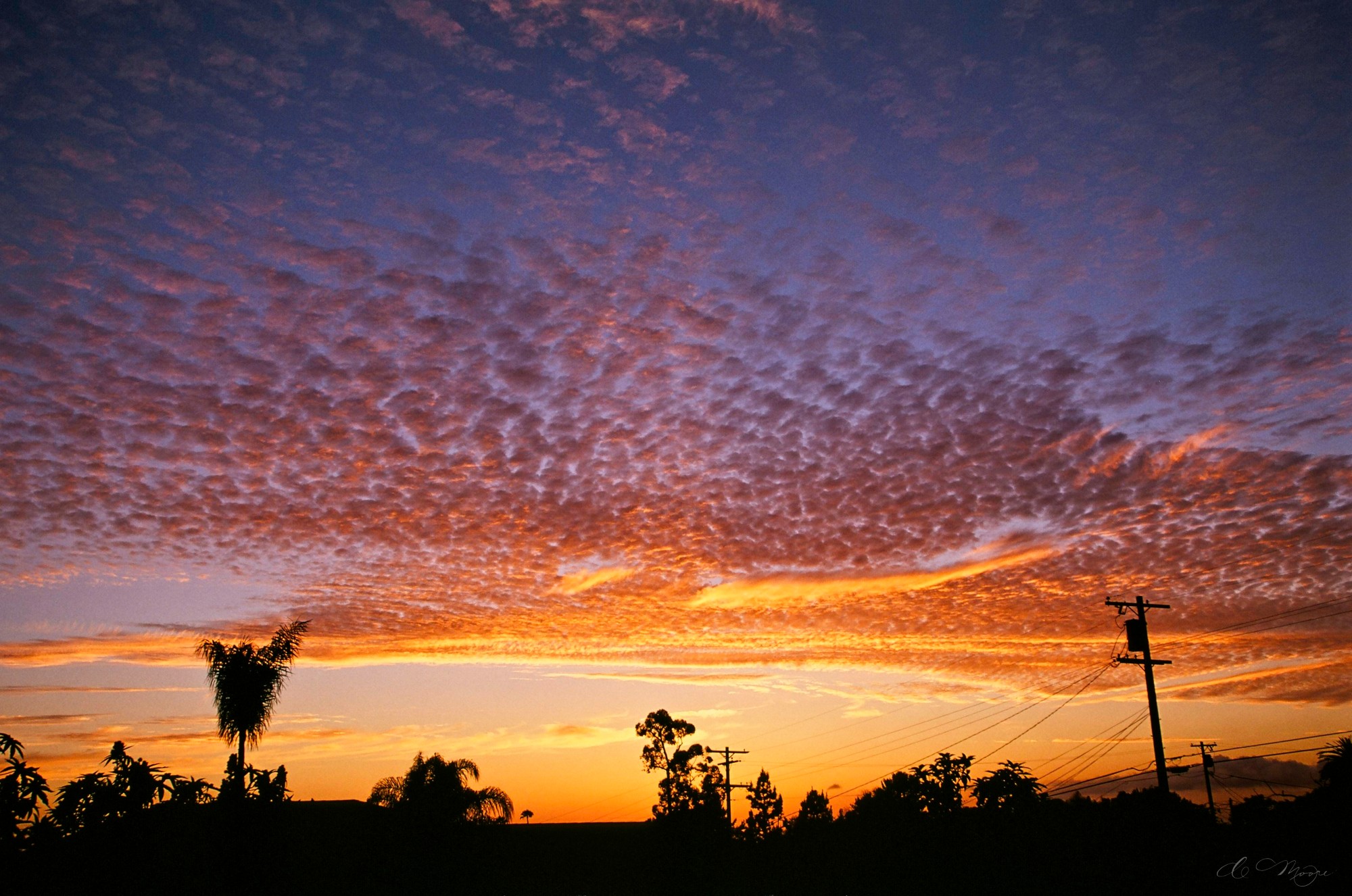
I got a chance to shoot some slides in the F6. Not a fan of many of the film stocks I’ve tried in 135, just for the added grain, but slides in 120 are pretty much grainless. I have been excited to shoot a roll and see how good they might be. In fact, I’d have tried this before, but everyone was out of stock on Velvia in 135 until recently, when I found it at some random photo business at a bargain price of about a dollar less than other stores’ list price! So, still about twice as expensive as negatives, both for the film stock and for the developing. Shit’s not cheap, yo.
Results are spectacular, though. It takes a bit of thinking to shoot. I mean, it’s still iso50, so not exactly action film, but that’s not too much slower than Ektar, which I have to overexpose 2/3 of a stop for consistent scans. And holy crap are the results spectacular. Don’t get me wrong, I loves me some Ektar, but geez the hyper-real, over saturated colors of Velvia are special. And it’s grainless enough I’d be glad to make some pretty large prints from these slides.
Of course, it’s still slides. You’ve heard all the warnings. Better for low contrast scenes, not a lot of dynamic range, just straight up blows out highlights negative film would be a lot more gentle with, so you’d better get your metering right, and all that. I shot in full sun, cloudy, night, crappy light, and a variety of subjects just to get a sense of it, so the gallery is totes random. It’s fussy in bad light, but when the sun’s out it’s holy shit beautiful. Does amazeballs things to the sky at sunset, too. The sunset shot here is just the scan shrunken down to a webbable jpeg, nothing done in the photo shops to boost the colors. The slide itself is actually MORE vibrant.
Behold!:













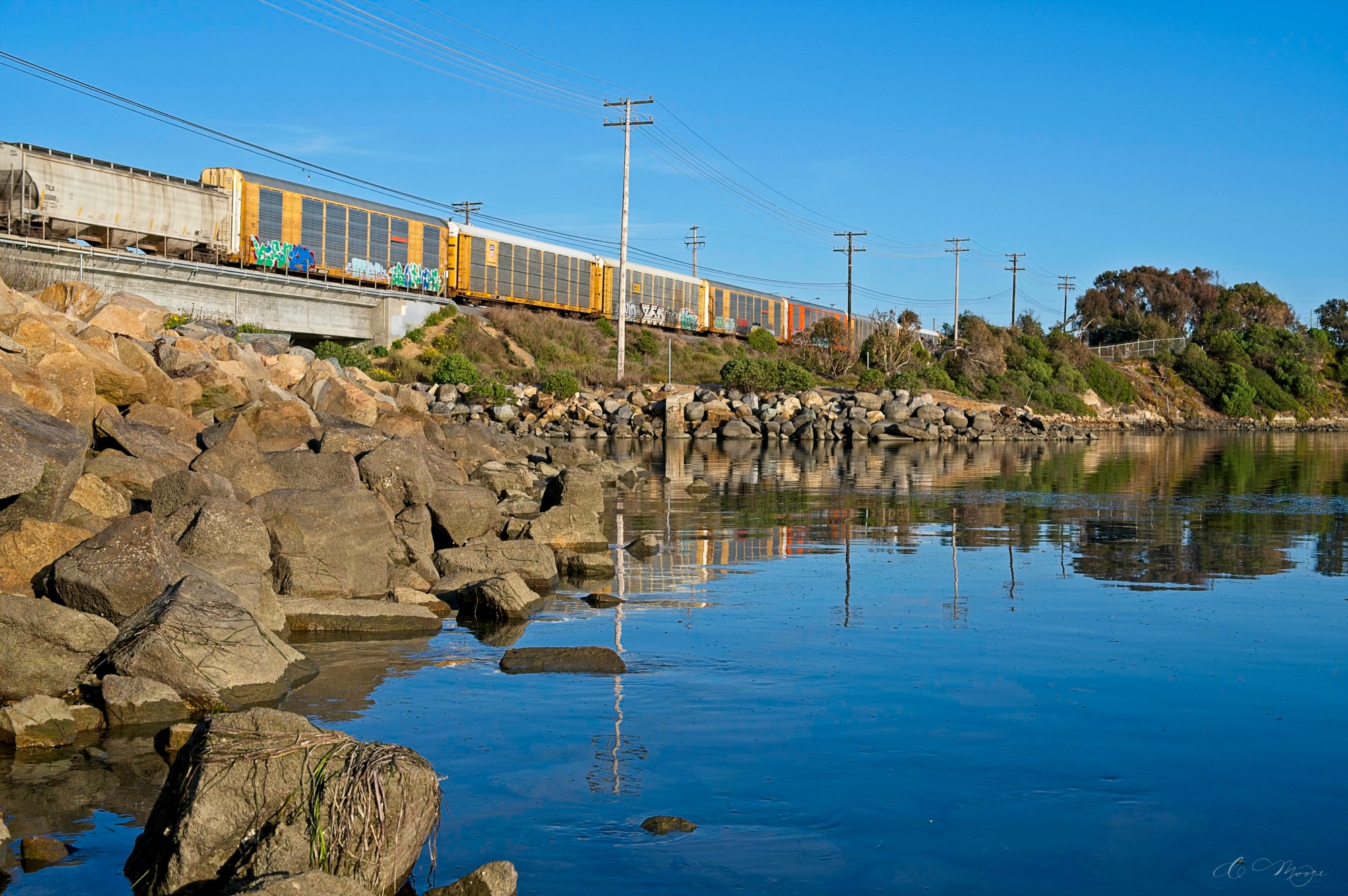
Trying to get pictures of trains today. I dragged the Fuji out, with the goal of practicing with the tilt to get flowers in the foreground and a 1/30 shutter speed on Velvia to get a slightly blurred train in the background with sharp surroundings. It all sounds like a lot of work for two frames, and it is, but I also caught a freight train that I didn’t realize was coming, so I climbed out onto a rock in the lagoon to get a perspective that’s hard to nab with the giant camera.
There was a nice lady on a paddleboard in the water just to my right who was chatting with me while I was climbing down the rocks. She caught my attention as I was hiking out and told me she hoped the pics come out — she had counted the cars on the train and everything. Nice to know someone was pulling for me.
The setup, I was looking for flowers in the foreground:




The train tracks run across a bridge. I took one less florid train shot from the trail, but the best digital shots were from along the lagoon, or perched on a rock a couple feet out into the water.






And, since I have nowhere else to put them, here are some random pics from along the trail, and a couple from Terramar that I took over the weekend. I had the Z6 set up for landscape, but the reflections on the water were so amazing I really wished I had the long lens to get some shots of the egrets. Another day.






More shots from that card I left in the Z6 for a month. These were taken March 2nd and the rocks have now been completely covered by the dredging work going on in the lagoon, so it’ll be different next time I go there with a camera. Nothing interesting in a clear blue sky, so I spent time playing with reflections. Kind of wish I’d hauled the ND filters along so I could stop it down and get some long exposures of the water flowing around those rocks, but I was traveling light so I just went for the reflections.
Really nothing special here, but I bothered to pull them into the photo shops so I might as well share with the four people who have ever looked at this page.
Behold!















I haven’t been using the digital much. I still take shots on occasion, but haven’t the patience to actually pull them into the photo editing software and upload them and all that. But this weekend on a walk I saw a graffito at a park where I occasionally take photos and play with dogs, so I went back the next day with the Z6 and did some studies on composition. Specifically Steelyard, which has been my composition study of choice the last few weeks. In these images there are three steelyards each: picnic tables, trash cans, and trees. Composition studies are a good use of digital, you can a bunch of perspectives quickly, and I kind of liked the angles on a couple of these. Plus, the irony of a nearly idyllic vista with that hidden message tickled me so I finally dug into what was on that memory card. I also got the dredge photos off the card — another steelyard study — and some random shots of other fun stuff.
First, those steelyards:




I also found some photos I took as the storms were blowing through a while back, the first set while taking slides of the dredge in Agua Hedionda, and the second set while braving an approaching storm. As you can see, I was definitely facing the wrong way for the storm clouds as to the east they were an otherworldly pink and purple, but my subject facing south never quite went off. The pelicans still made for a fun picture of the powerplant, though.










This one should be a direct comparison to the Ektar and Velvia shots, it was taken at the same time in the same light, using the same 1 stop GND filter — I actually took this then snatched the filter out of the holder and held it in front of the film camera. Thus one is using a 20mm lens, so slightly wider than the 50mm on the GX680, so I cropped it to be about the same perspective. In fact, I’m going to try the comparison tool, before is Z6, after is Velvia, and then I’ll put all of them in a gallery so you can see the Ektar too.


The Ektar shot below was with an 80mm lens, so that’s not a crop. Pretty sure I shot it, put the filter on the digital and let it fire on the timer (I have ten frames of this on the card) while I swapped a fresh roll of Velvia in the other film back, then shot the Vevia. I have a shot at 80mm and this at 50mm, which Is my favorite. It was the last one taken before the light subsided, and that was the perfect moment. It didn’t last more than 30 seconds before the sun went behind another cloud, and the light before was nice, but still a little subdued. The Ektar and Digital aren’t in as good a light, for certain. The difference two minutes makes.1
It amazes me how much both of the film types hype the magenta cast from that cheap ass formatt-hitech RGND filter. Also how vibrant they are, especially the slides. When editing the digital I kept thinking “I’m comparing this to film” so I didn’t hype the colors or anything, then when comparing it directly to the slides it feels like I could have boosted the vibrance all the way and never gotten close. I’d go back and play with the white balance, make it vivid, and all that, but I think I mentioned I don’t have the patience for that shit. If you want a print I’ll make you one of the Velvia shot. I ran a proof last week and it’s spectacular.



I also discovered some ladybugs I’d taken pictures of. There’s a bunch more on the card, but I’m bored of photo editing, so here’s a ladybug and I’ll call it a night.



1. That’s what she said.
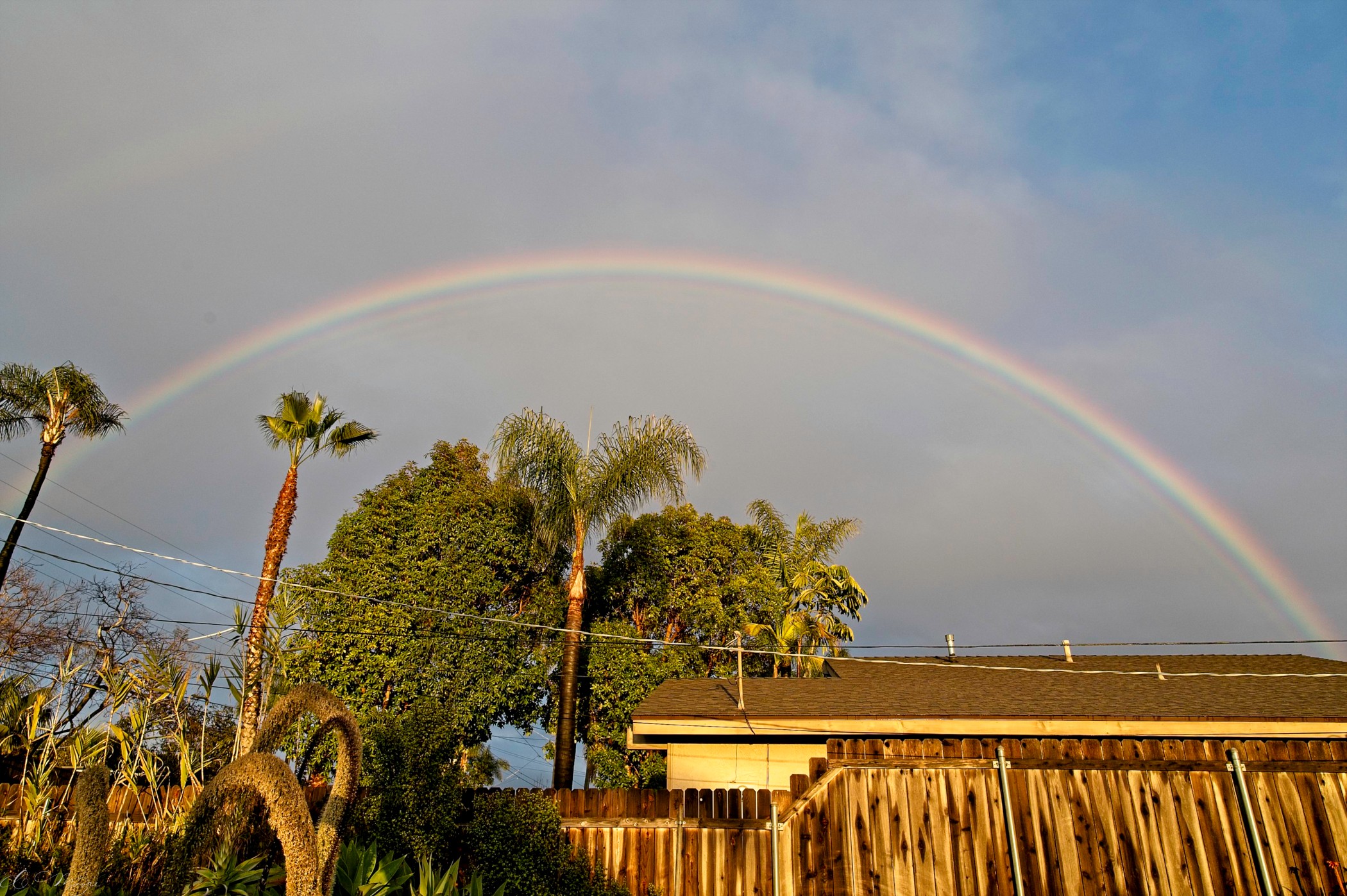
The same week as the previous post I took some shots with the GX680 using some Fuji films. This week I got a roll of Fujipro 160NS negatives and Provia 100F slides processed. The first scan had one a little wonky and I asked to get it rescanned, but they did all of both rolls a second time. I actually think they came out better the second time, and I don’t know why. Something to consider going forward, I guess.
I’ll just dump a few samples here. Look at the file names to see what film they were taken on.






I don’t mean to make too many conclusions just yet, but first impressions are that I LOVE Provia 100F. It isn’t over the top extra like the Velvia 50, which I also love, and the extra stop of speed is welcome. It’s not posted here, but I took a shot of sleeping tiger up one stop and it is very washed out with an ugly color shift, so Provia doesn’t have any better exposure lattitude than Velvia, but I expected that. The negatives are nice, too. I wasn’t sure the first time I tried 160NS, but it’s kind of growing on me. I’ll post more samples of it later.
And this afternoon I made the mistake of not going out with the camera. It was raining and DARK grey so I stayed at work, but minutes before the sunset the clouds cleared out. The sky was spectacular, I could have killed the roll of Velvia I am dying to get developed but still has 3 frames to go.
I did catch some shots of a rainbow that ran from end to end and was as intense as I’ve ever seen. I actually ran inside to grab my 20mm because I couldn’t get both ends in frame at 24mm, but it was dying out by then. Still fun, I go three or four years at a time not seeing one, and almost never as intense as this.









Velvia is the standard for landscape photography. Or at least it was when I was taking pictures on film in the ’90s. I seldom used it as much of my photography was out the window of a glider and the combination of low speed and dynamic range made shooting slides a fraught endeavor. But since I’m always on a tripod these days, why not try?
Well, I’ll tell you why not. Medium format is expensive. It’ll cost me $4 a shot for film, develop, and scan, so I practiced with more forgiving negative film stock before I tried the slide film. Velvia is 50 speed, has significantly less exposure latitude than negative film and digital, and is prone to reciprocity failure on longer exposure shots. You have to nail the exposure, and either have a lower contrast scene or be fine with certain shadows going pure black or highlights pure white.
I have two backs for the GX680, so I loaded one with Velvia, the other with Portra 400 (it was in the back already, else I would have shot Ektar as my comparison negative stock) and went to the village for some experiments.
First, here are the scans straight up. Minimal editing makes a better comparison. Note, the liquor store I took from the middle of the street, so I was running into the street, snapping the shot, then scurrying out of the way of the cars, so the unedited scans needed a little rotation and composition hygiene.


And edited comparisons below. Note, these are minimal edits, just a touch of optimization and a little rotation and cropping for the most part on the liquor store. It was a perfect scene for this test being well lit with a variety of interesting colors, and shows how much warmer Portra is, as well as how much the blues and greens pop on Velvia. The Village Kitchen and Pie Shoppe with extra Ps and Es to make it fancy I chose for the opposite reason, the light was washed out and there were some shadows and bright clouds so I could see the dynamic range. This isn’t the raw scan, I pulled the sky back about 1/4 to 1/3 of a stop in editing to see what there was to be found in those highlights, and it has a little dynamic contrast boost, too. You can see the sky is blown out on the Velvia in the lower right corner where there’s detail to be pulled out on the Portra.




I don’t have any direct comparisons from later in the day. Instead I was just trying much more challenging shots. The clouds turned a crazy pink and red after the sun set and, though I understand that Velvia is not a high contrast film, I tried some high contrast shots. The blacks are black. I mean, there’s NOTHING to be pulled up there. But I was shooting for the sky and the highlights, so I expected that. These long exposure shots really show the weirdness of Velvia. The sky was blue and pink, and it did hint toward purple, though the Velvia just made everything… extra. A digital shot of the same scene is below to compare to the Velvia version.



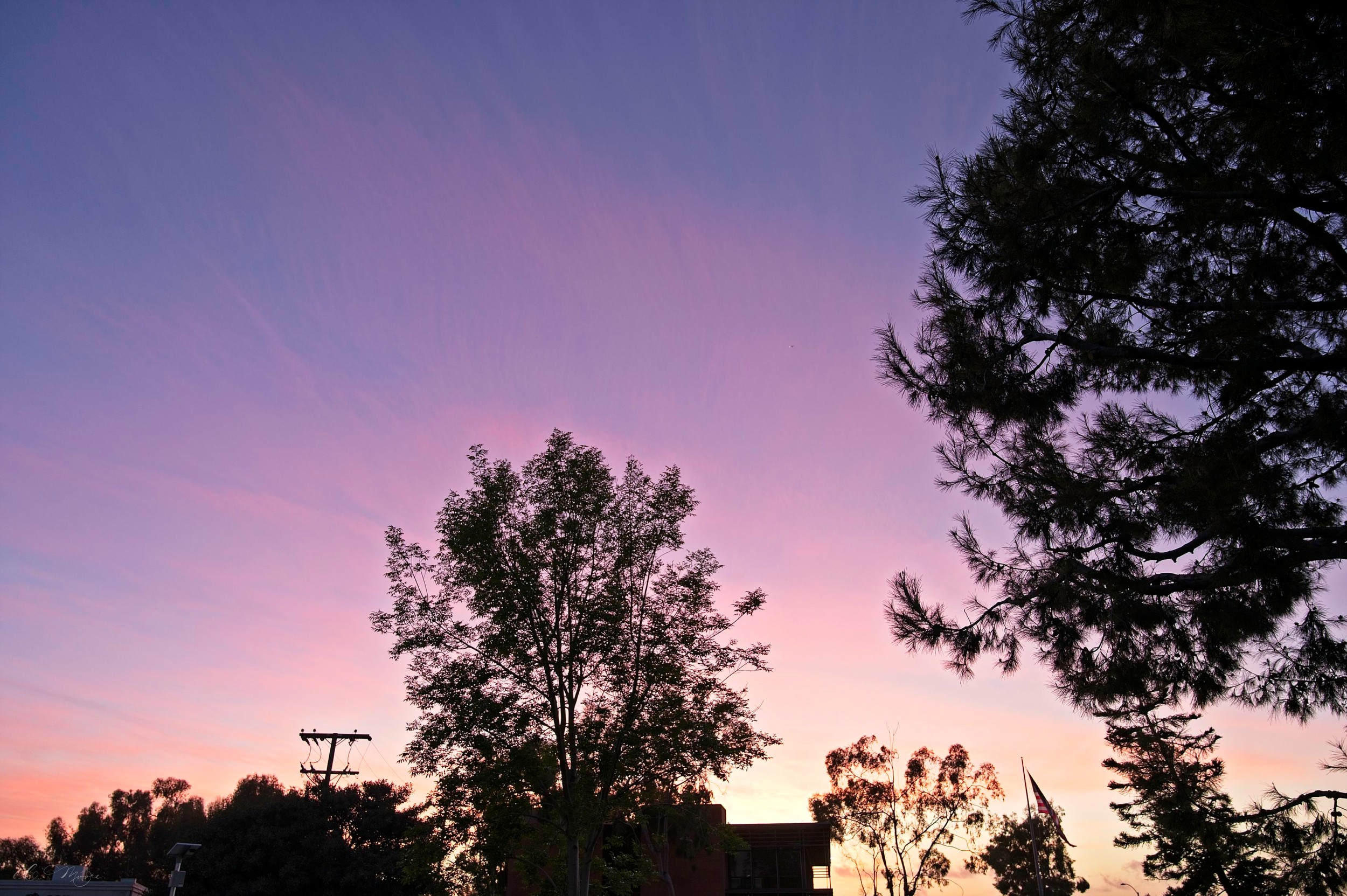
I am also including a few other shots I got back. The sunsets and pictures of the Village are from a roll of Ektar I ran through the F6. I am shooting most everything up 2/3 of a stop and the scans seem to come back better. I’m also pretty darned happy with the sunset scenes, considering how contrasty the exposures are. You can definitely see the grain with the tiny little baby negatives, but it’s not distracting in these shots.
The train was with the GX680. I’d lost the light so the bush wasn’t as bright as it had been, but I like the composition. I converted it to black and white because, if I like B&W, then the composition feels good to me. The last image is a from the same roll of Portra 400, and I liked it so I thought I might as well share.









So… Velvia. It’s something. I’ll have to shoot more of it, maybe find some other fun colors. And if in town, I should bring the 100mm or 135mm so I don’t have to stand in the street to take a picture. I love that 50mm lens for landscapes, the view is expansive, but it’s about the equivalent of a 22mm lens on digital as far as field of view. I could definitely use more reach for a walking around lens.
These are just snapshots I took with the Z6 while experimenting with the medium format camera. Was waiting for the sunset to turn colors, and the dogs I was playing with went home, so I had time to kill. Since I had the digital, I might as well put it to use.
Maybe I should have taken pictures of the dogs.






Not much to say. These are only posted to share with a friend.
For context, I have a wild hair to get a good shot of the train on film. Tested it with digital to see if I liked the angle, but the light died on me before I got anything really good that day. The awkward angle on the shots across the water from the bushes were because I literally just spun the camera around on the tripod, which was at my knees, and took a few shots while waiting for the northbound train to arrive. That one wasn’t a winner, so I didn’t get the good film shot either as the clouds had blocked the golden hour by the time it arrived. I’ll have to try again.
I’ll get a good shot one day. Takes a little planning, though, as it necessitates hauling 30 pounds of camera gear and tripods a half mile to get to that spot.
The second sunset was this afternoon. The wind was blowing so no reflections, but it was a lovely evening to be outside and watch the clouds change color, so I’ve got that going for me, which is nice.








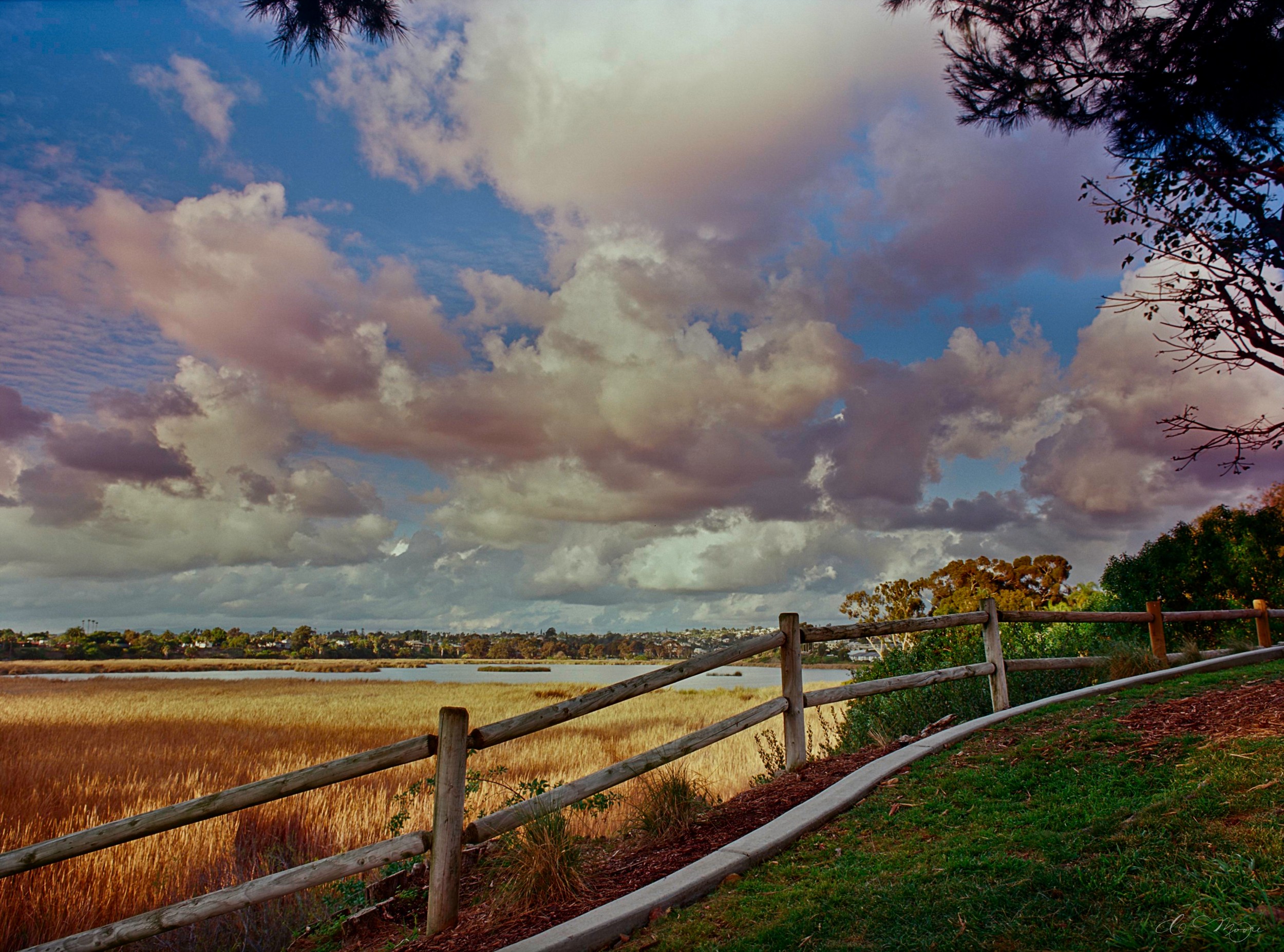
This will be a big picture dump. Mostly so I can share with a friend. I’ve shot some more film, and some of it on 135. I’m using an F6, which should be far more foolproof than my Fuji. And just about any film camera ever made, for that matter. My goal in getting it was to do experiments like bracketing exposure that are expensive in medium format, or taking more dynamic shots that are kind of difficult with a 12 pound beast on a tripod. The camera writes exif data, so I can work faster and match up exposure data when the scans come back.
The F6 I just set the exposure compensation up 2/3 of a stop. The Ektar I shot with the 680 I fudged up to the next stop
My first two rolls were Kodak. First Portra 400, then Ektar. I wasn’t completely happy with what came back. While technically correct, even shots taken using Program Auto were still a little dark, the Ektar was kind of red with lost details in the shadows, and the Portra seems a little grainy.
That second reminded me of something. I have a new method based on what I read on someone’s site — I don’t even remember where I read it — but the writer said that he was shooting portra up 2/3 of a stop if it was meant to be scanned. Like, he’d shoot Portra 160 at iso 100, but not push the film at all. So the most recent roll of Portra 400 I ran through the F6 I just set the exposure compensation up 2/3 of a stop. The Ektar I shot with the 680 I fudged up to the next stop, since that camera only works in whole stops. When I bracketed, I wanted to see the exp on the dark shot and a + with the angry beeping on the light shot. In fact, I’m not convinced that for anything with more than 4 stops of range, if I don’t get the overexposed warning I might consider another shot at one stop longer exposure time.
I’m happier with what I got back this time. Both the medium format Ektar and the Portra 400 in the F6. If I stumble across that website again I’ll have to drop a thanks to the author for that suggestion, assuming it wasn’t written 15 years ago.
Enough writing. Here are some photos.
Portra 400 from the first roll in the F6:





And the first roll of Ektar. The bird and surfer shots are all hand held, so while the pelican is a little soft and underexposed, getting sharp enough to see him taking a shit at 500mm, offhand, with no monopod or tripod, I am going to count as a win.














I needed some magic from the photo shops to bring up the shadows in the photos along the bluffs, and they’re very red. Strangely, pointing straight into the sun works better, the sunset shots are almost exactly what came back from the lab.
For contrast, here are a few shots from my third roll in the F6. For most of this roll I had the camera set with +2/3 exposure compensation. And, yes, they’re very random. I had no goal in mind other than burning a roll of film to see if the exposure compensation worked.









More exposure seems to mean less grain there. Important with the higher speed film, and it’s pretty hard to blow a highlight with these negative films, so I’ll fudge up from now on.
Here’s the roll of Ektar. I was playing with filters as well as bracketing. Even 1.3 stops over exposed (from the meter reading) I like it better than shooting at what the meter tells me.









This next gallery wasn’t here when I originally posted as I didn’t get the film back until after I made the post. But nobody reads this blog so I’ll add it here to make for an easy reference since it’s the same scenes.
Portra 800, shot at the same time as the Ektar above. I metered at 640, then fudged up, so everything would be at least a quarter stop over, but as much as a stop and a third over. Most of these shots the camera was beeping and flashing +, so it thought I was overexposed. The first three have very little editing, the bottom two I pulled the highlights back, but they were more than 5 and 6 EV over the reeds. The fact that I was able to compress the dynamic range enough to get it all printable means I’m on the right track with my shoot 2/3 stop over method.




